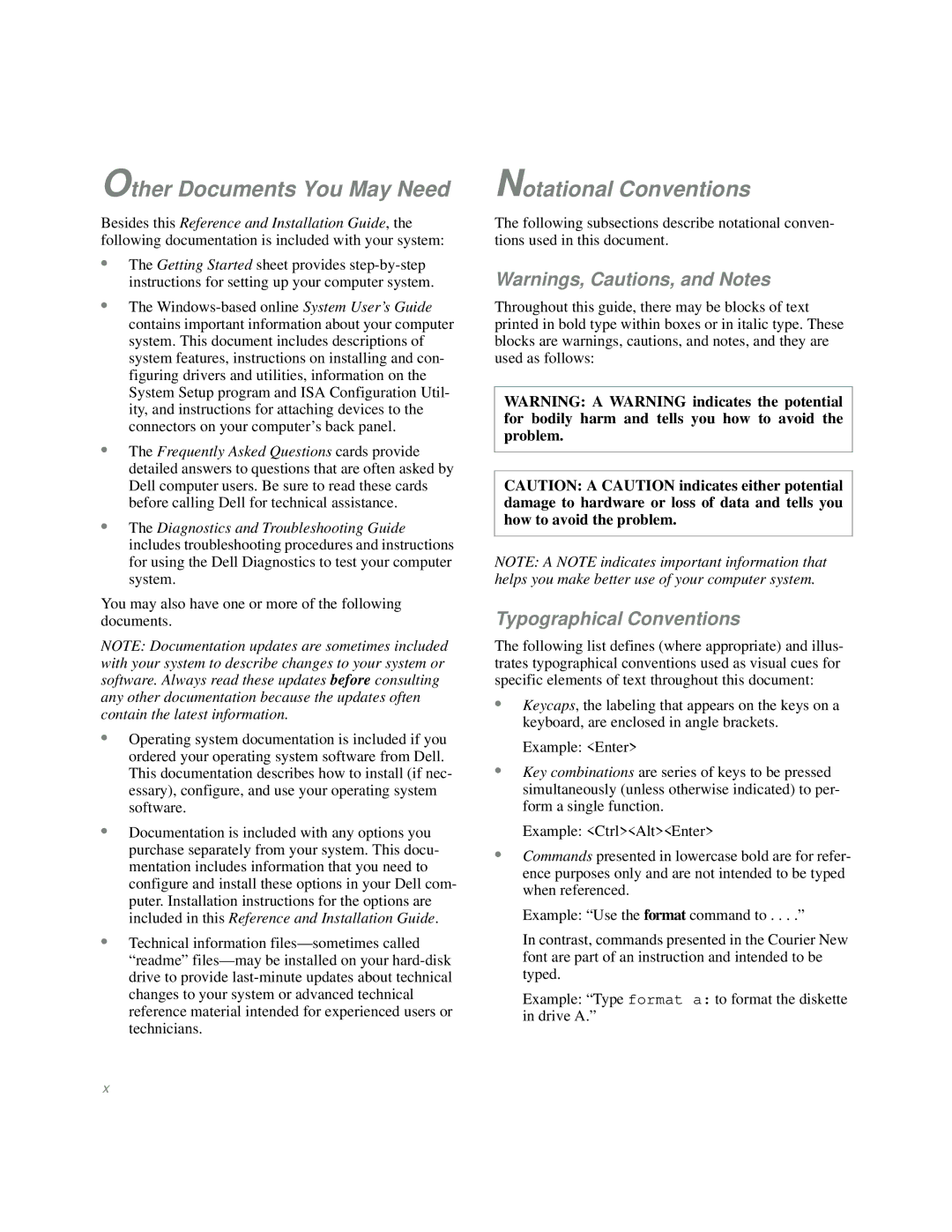
Other Documents You May Need
Besides this Reference and Installation Guide, the following documentation is included with your system:
•The Getting Started sheet provides
•The
•The Frequently Asked Questions cards provide detailed answers to questions that are often asked by Dell computer users. Be sure to read these cards before calling Dell for technical assistance.
•The Diagnostics and Troubleshooting Guide includes troubleshooting procedures and instructions for using the Dell Diagnostics to test your computer system.
You may also have one or more of the following documents.
NOTE: Documentation updates are sometimes included with your system to describe changes to your system or software. Always read these updates before consulting any other documentation because the updates often contain the latest information.
•Operating system documentation is included if you ordered your operating system software from Dell. This documentation describes how to install (if nec- essary), configure, and use your operating system software.
•Documentation is included with any options you purchase separately from your system. This docu- mentation includes information that you need to configure and install these options in your Dell com- puter. Installation instructions for the options are included in this Reference and Installation Guide.
•Technical information
Notational Conventions
The following subsections describe notational conven- tions used in this document.
Warnings, Cautions, and Notes
Throughout this guide, there may be blocks of text printed in bold type within boxes or in italic type. These blocks are warnings, cautions, and notes, and they are used as follows:
WARNING: A WARNING indicates the potential for bodily harm and tells you how to avoid the problem.
CAUTION: A CAUTION indicates either potential damage to hardware or loss of data and tells you how to avoid the problem.
NOTE: A NOTE indicates important information that helps you make better use of your computer system.
Typographical Conventions
The following list defines (where appropriate) and illus- trates typographical conventions used as visual cues for specific elements of text throughout this document:
•Keycaps, the labeling that appears on the keys on a keyboard, are enclosed in angle brackets.
Example: <Enter>
•Key combinations are series of keys to be pressed simultaneously (unless otherwise indicated) to per- form a single function.
Example: <Ctrl><Alt><Enter>
•Commands presented in lowercase bold are for refer- ence purposes only and are not intended to be typed when referenced.
Example: “Use the format command to . . . .”
In contrast, commands presented in the Courier New font are part of an instruction and intended to be typed.
Example: “Type format a: to format the diskette in drive A.”
x
